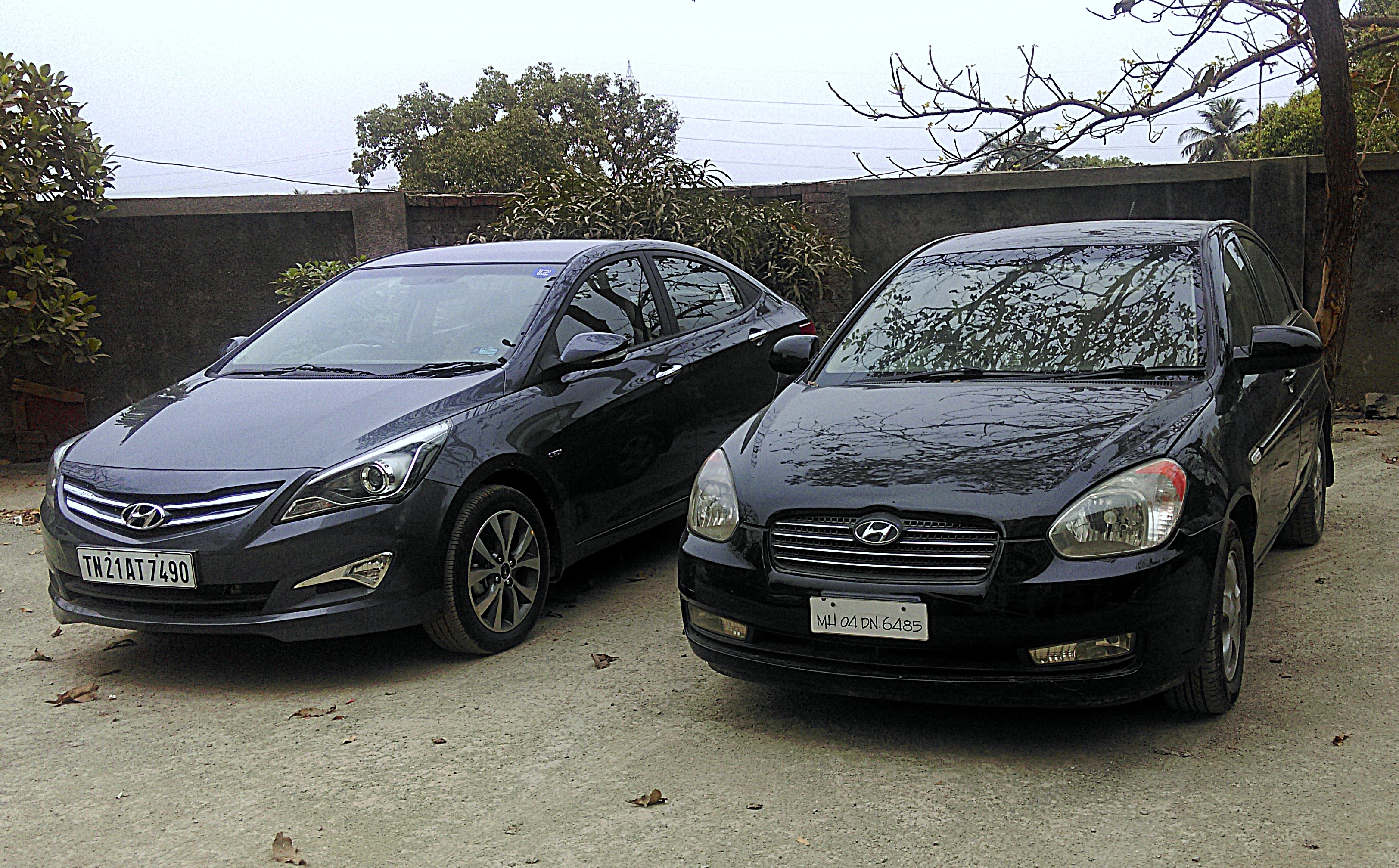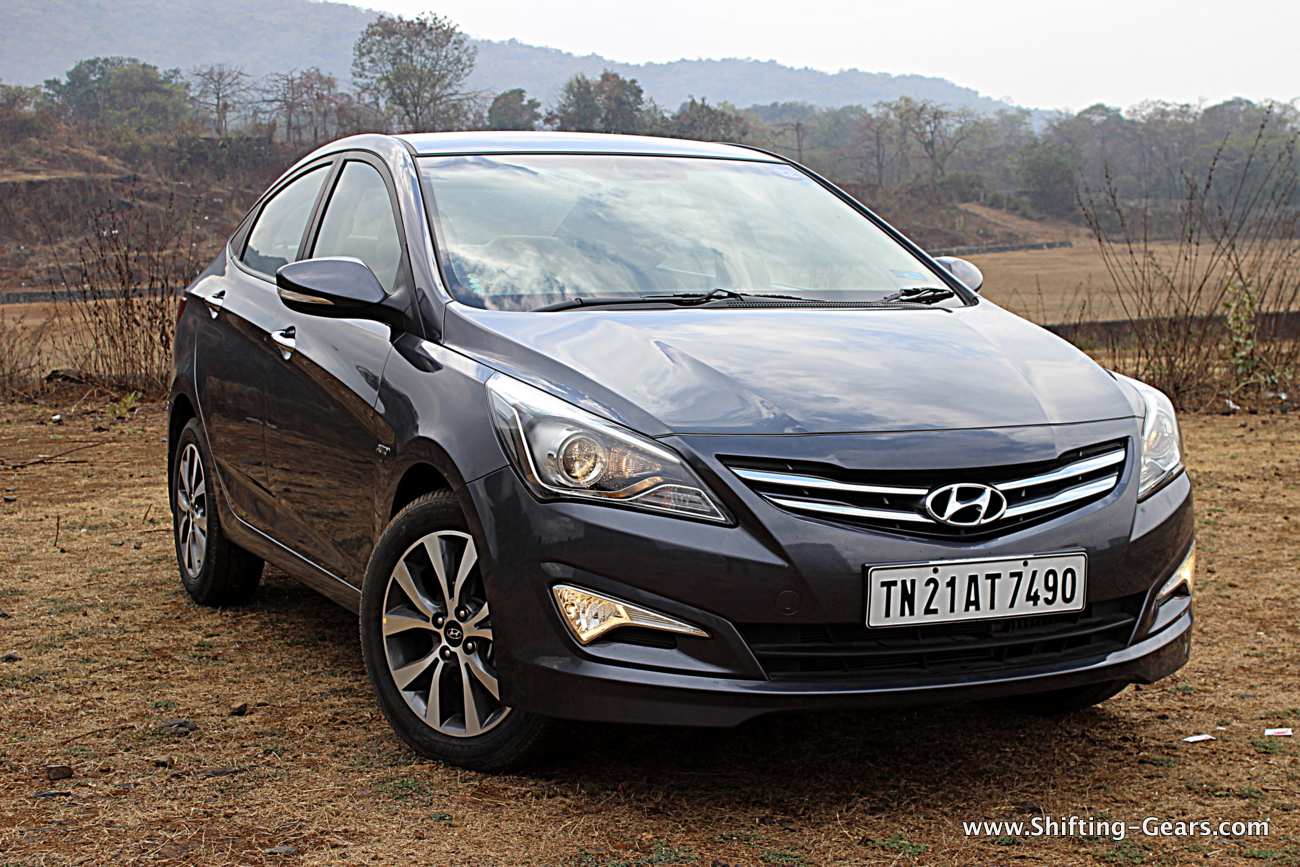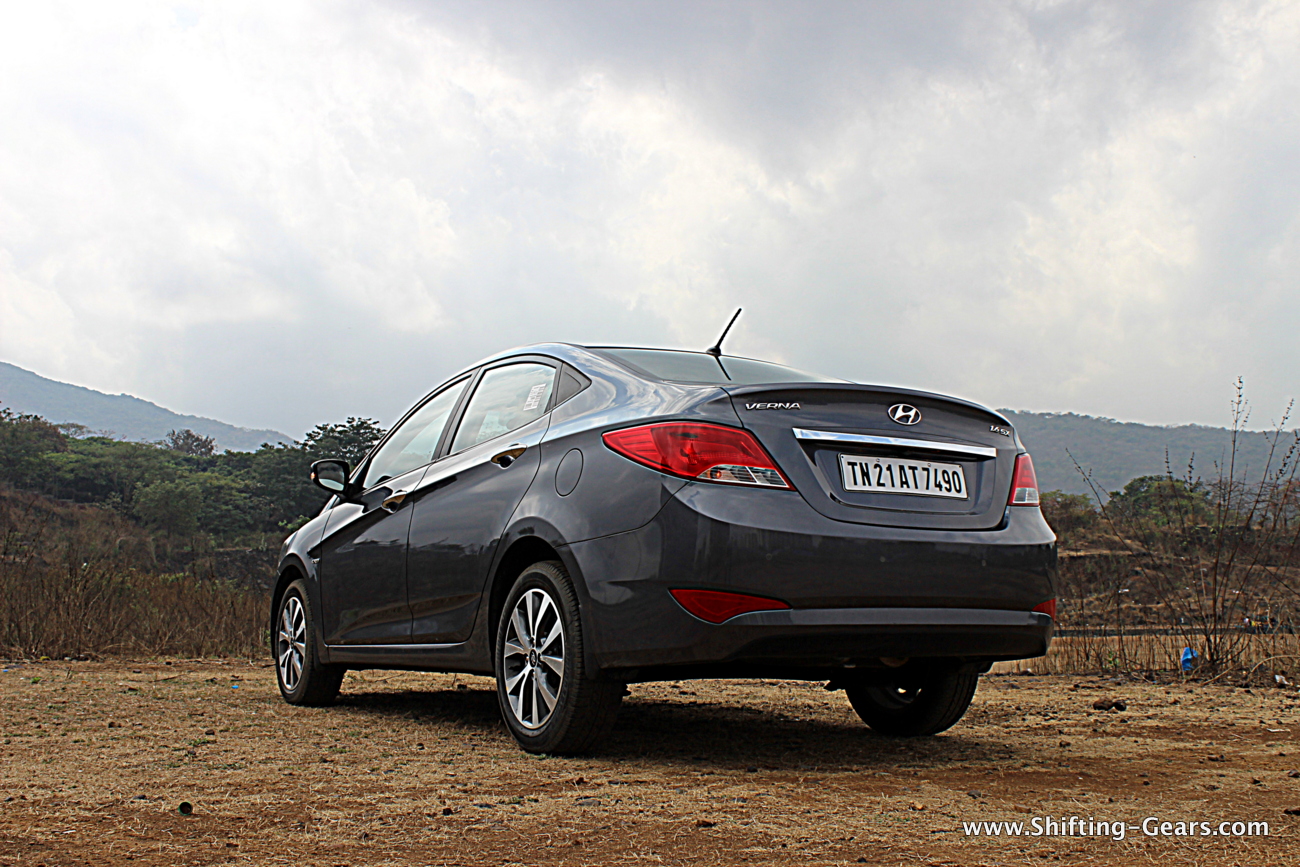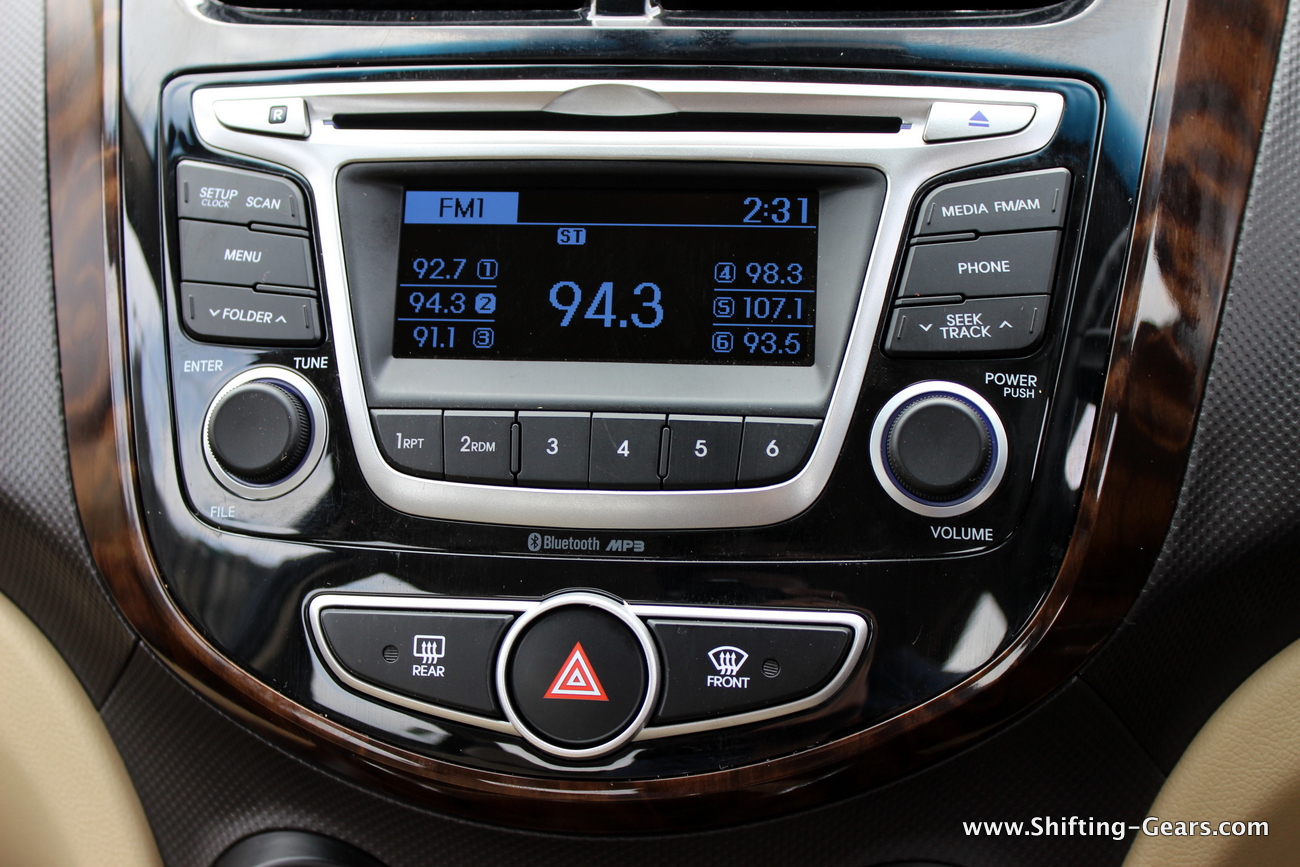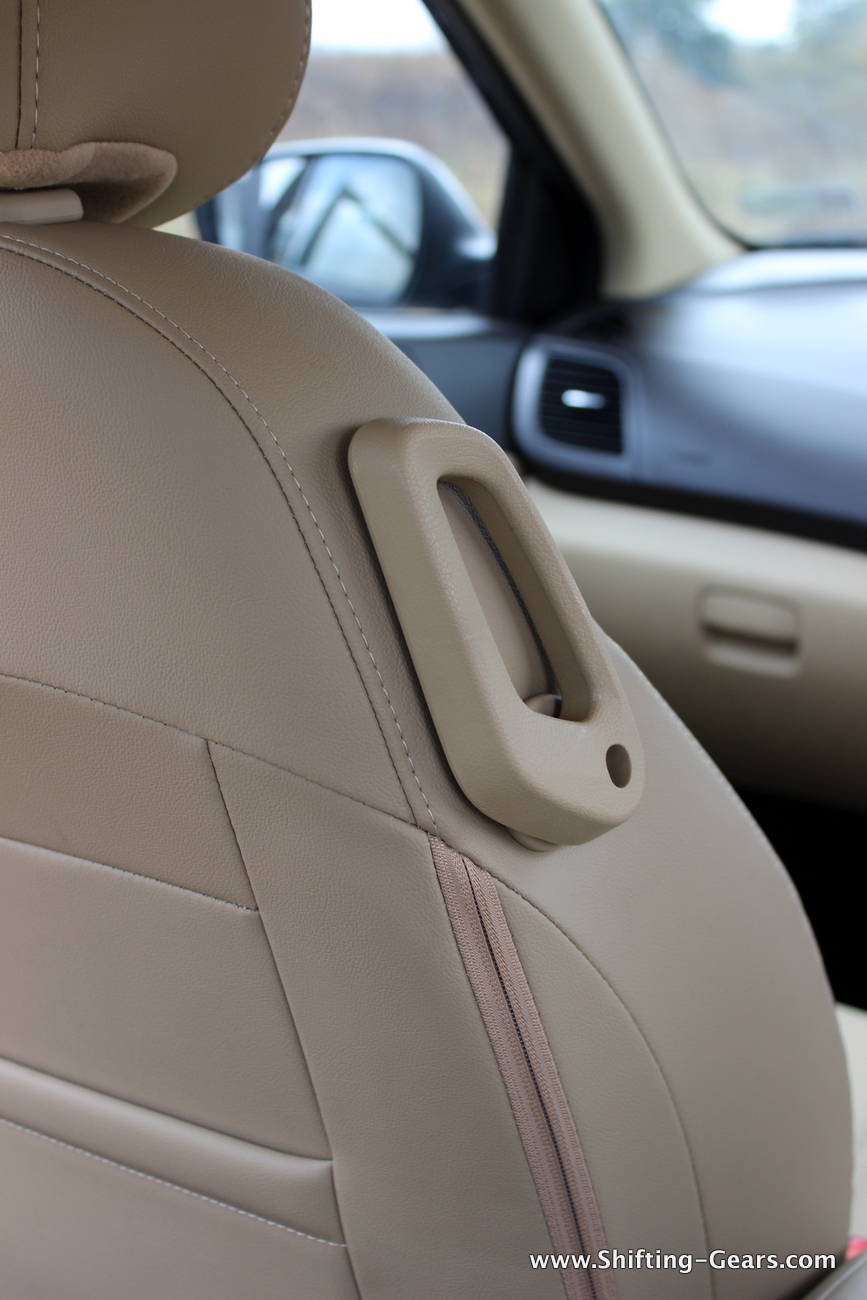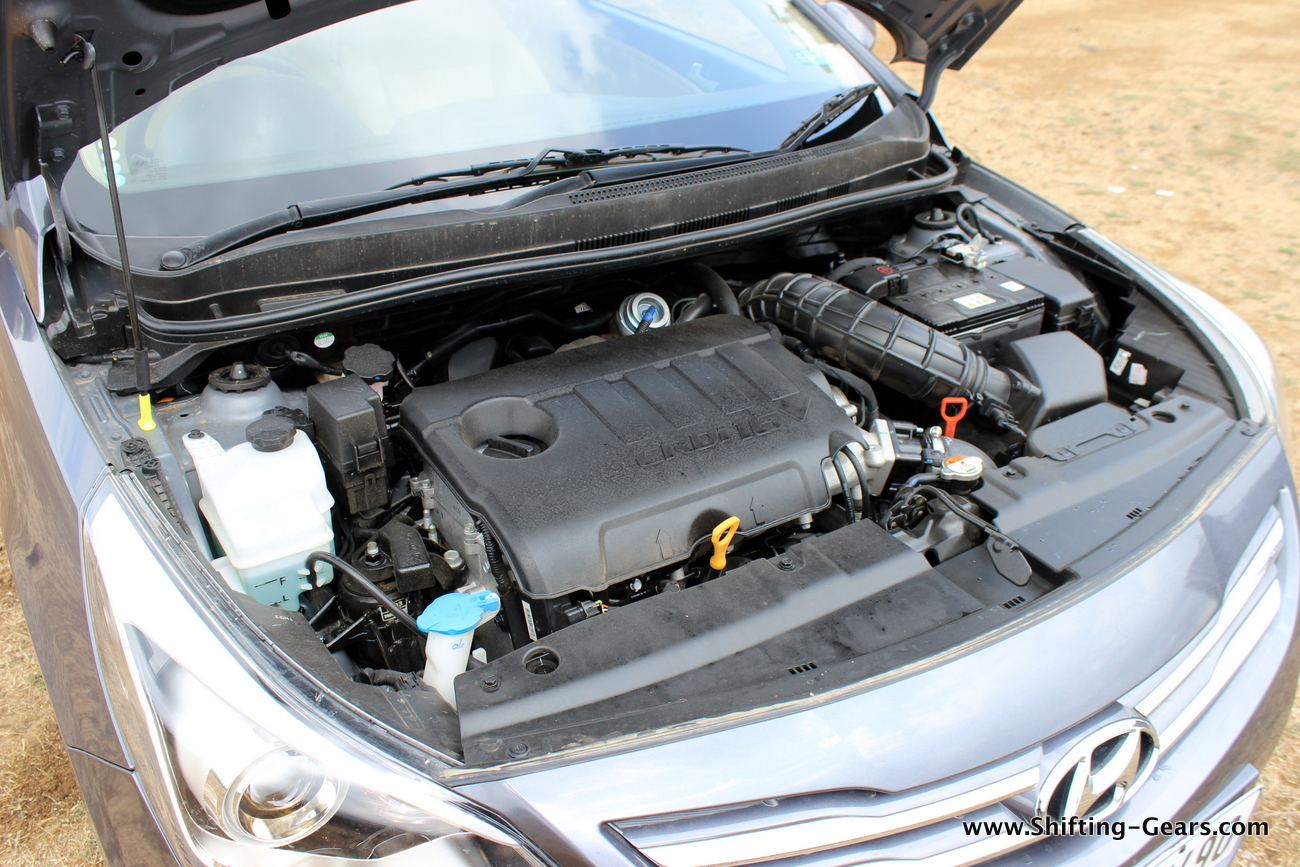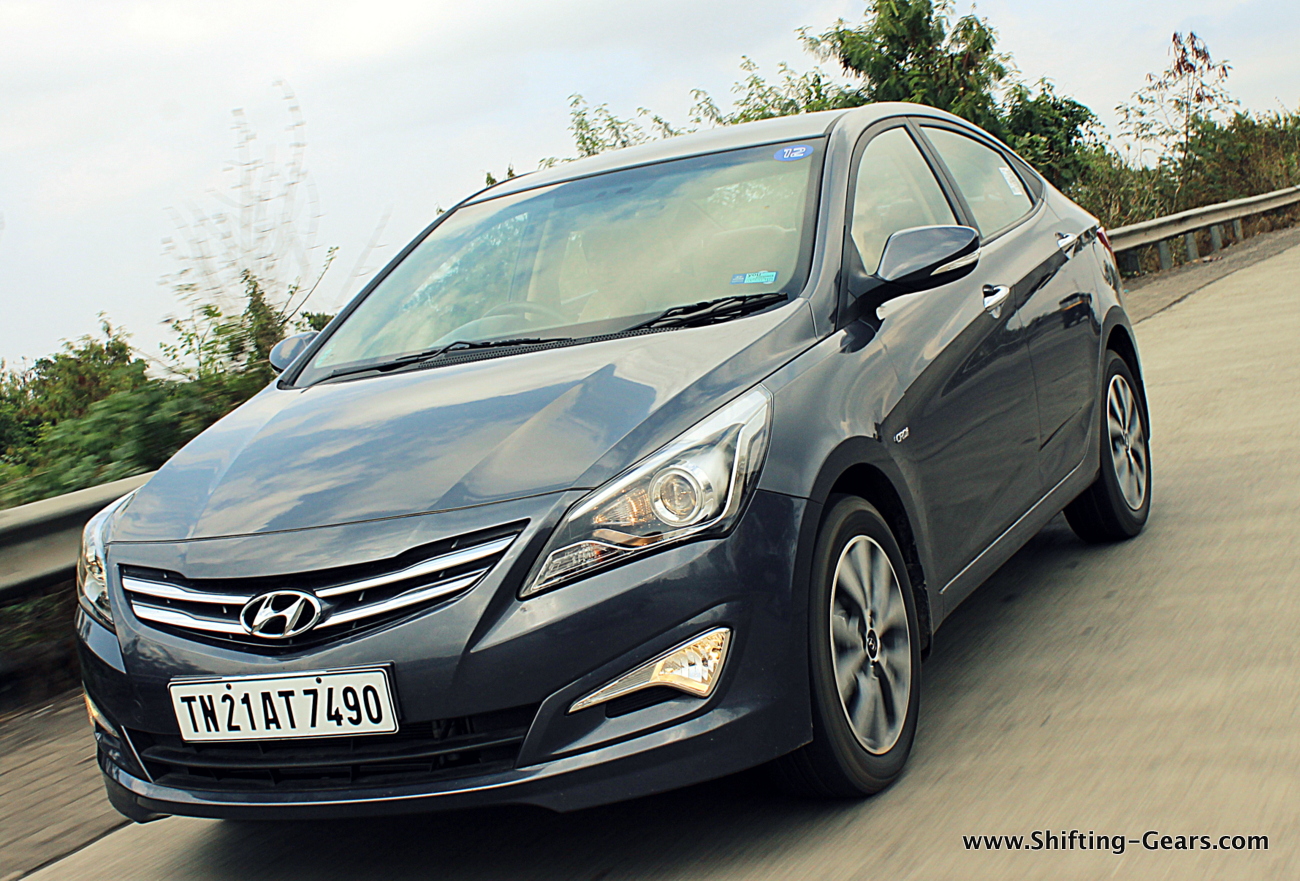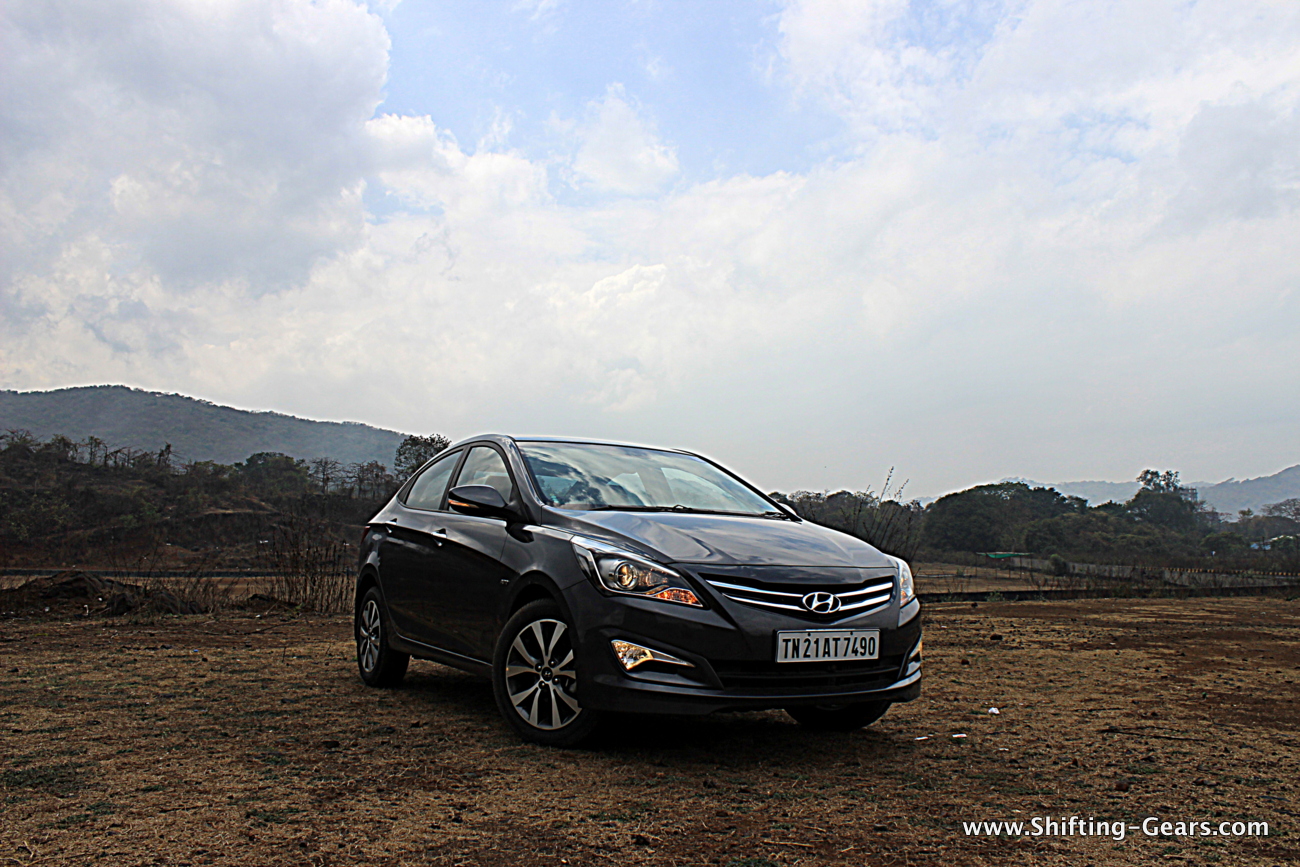The Verna has played quite a significant role in Hyundai’s success story in India in the recent past. Launched way back in 2006, the Verna was quite a potent package. But back then, it looked very average and was not the preferred choice of the market. But as the years passed, and fuel prices shot up, the Verna diesel started becoming more and more popular, although it wasn’t quite a looker. 2011 was a big year for Hyundai, as well as the Verna brand. Hyundai launched the Fluidic Verna in India and the car had so much more wow factor compared to the outgoing model. Not just that, by 2011 standards, the car was quite a looker and the Fluidic design language captured the markets attention almost instantly. It was a classic example of how an ugly duckling transforms into a beautiful swan. Almost immediately after the launch, the Verna went on the clinch the segment leader title and held on to it for a more than a year. Thanks to a wide range of models available which included 1.4L petrol & diesel manuals along with 1.6L petrol & diesel manual and automatic variants; the customers looking at the C2 segment got everything in the Hyundai showrooms. It dethroned the Honda City, which no other car had managed to do.
End of 2013, Honda came back with a new City; this time with a diesel engine. This simply blew away all competition and the City was back to leading the segment in no time. There is no doubting this that the Honda City brand name is huge in India, and also, the preferred choice as reflected in the sales numbers. Mass market champion Maruti also introduced the Ciaz sedan last year which is outselling the Hyundai Verna as of date. February 2015 sales figures reveal that the City leads the market with sales of 6,499 units with the Maruti Suzuki closing the gap at 5,410 units while the Hyundai Verna sits at a distant third spot with just 2,703 units. The Verna is now one of the oldest product in the segment, and hence, lacks in attracting the new buyer. Also, for the past couple of years the car has been seen so much on the road, people might be looking elsewhere just to own something that is not very common. We expect a new generation Verna to be introduced sometime in the second half of 2015. Dubbed as the Verna 4S, the facelift brings in some welcome changes to help distinguish from the older models, but can it attract new customers? Does the 4 year old model still have enough fight to get back up in the numbers game? We put the Verna through its paces for a full week to find out.
What does ‘4S’ stand for? In Hyundai language it denotes Sophistication, Style, Speed & Safety.
| EX Showroom Price Delhi | 1.4 | 1.6 S | 1.6 S (0) | 1.6 S (0) AT | 1.6 SX | 1.6 SX (AT) | |
| Petrol | 773,903 | 884,939 | 938,217 | 1,011,378 | 1,015,505 | – | |
| Diesel | 894,910 | 999,900 | 1,059,241 | – | 1,146,581 | 1,219,720 |
Exteriors:
This isn’t an all new model, and it is evident from all angles. Hyundai has made changes primarily to the front of the car which are noticeable, rest is just a few tweaks here and there which really don’t make or break a deal.
The front fascia is all new. The 2015 Hyundai Verna gets a new wing-shaped front grille with two chrome slats. Apart from chrome, the grille slats also include the body colour. This looks good on darker shades, but seems a bit flashy on shades like silver or white. The bumper is all-new and the air dam shape has changed too. In 2014, Hyundai had introduced projector headlamps and LED DRLs on the top-spec Verna. While the Verna 4S gets a new headlamp design with projector setup, it misses out on LED DRLs. Fog lamp design also has been changed compared to the pre-facelift version. Bonnet has been reworked for different crease lines in the centre. Overall, the front now looks wider than before, and a bit more mature. The Fluidic Verna parked side-by-side with the Verna 4S reveals that the front end is distinct on the new model.
Side profile of the Verna 4S remains unchanged. There are 0 sheet metal changes or any other additions. The car continues with the same bold crease lines. B-pillar & window sills have been blacked out just like the previous car. Top model gets door handles in chrome and the driver door gets a request sensor for true keyless entry & go. What is missed though, is a request sensor on the passenger door. Even the Grand i10 has it! Although Hyundai is going all out to promote the car, this facelift doesn’t seem like a whole hearted attempt. The alloy wheels remain unchanged compared to the 2014 model. Alloy wheels are one of the first set of changes any manufacturer looks a during a facelift, but seems like Hyundai wasn’t interested. Look closely, and you will notice that the Korean manufacturer has now removed rear disc brakes from the standard kit. Rear discs are now available only on the automatic variants.
Walk to the back and you’ll assume that Verna 4S gets an LED tail lamp setup. Even we thought that those are LED units at first glance, but when we walked up close, we saw the same old bulb inside. What Hyundai has done is created a LED like effect around the edges of the tail lamp. Smart move! Rear bumper has been redesigned and gets a blacked out section at the bottom. Bumper reflectors also sport a new design to help differentiate the new model from behind. Among things that went missing, the dual chrome exhaust tips have also been removed now. We wonder why Hyundai would work around removing equipment when they are losing market share?
As a package, the Hyundai Verna continues to be a feature rich sedan in the segment. The age has started to show in the design, but it can easily hold on to its current position for a year or two. Dethroning the Honda City with only these limited number of changes is a tough job.
Interiors:
Segment benchmark! That’s what the Hyundai Verna has always been when it comes to interior fit and finish. Top quality plastics, best-in-class features exude class and offer you almost everything you need on the inside. Hyundai could easily known down a couple of thousands by opting for cheaper quality plastics, but the brand prefers to offer you the best on the inside.
With the Verna 4S, nothing much has changed on the inside. As was the case earlier, the quality of parts, plastics & upholstery is best-in-class. When you step inside, at one glance, you will feel that there is nothing that has changed, not one bit. But there are finer details which have been worked upon. This however reduces the edge of the facelift since it doesn’t really offer much of a visual change inside. Dashboard remains identical and the waterfall centre console gets the same faux-wood inserts. Steering wheel and instrument cluster also remain unchanged.
The stereo head unit now gets 1GB storage space to save your favourite tracks. Although the head unit looks identical, the backlit has now changed from black over blue to blue over black. Below, the automatic climate controls also remain the same, only the display backlit changes in a similar fashion like the head unit.
The Verna 4S continues with its feature list such as multi-function steering wheel, stereo with bluetooth & telephone connectivity, automatic climate control on higher variants, push-start button, electrochromic rear view mirror, power folding ORVMs, cooled glovebox, 6-airbags, speed sensing auto door lock, etc. The Verna 4S also comes with automatic headlamps & wipers. However, they are a bit lethargic to react and it takes a couple of seconds once you enter the tunnel for the headlamps top switch on.
Another missed opportunity is that the Verna 4S does not get rear AC vents. Although the AC performance is acceptable in the current setup, the cheaper Grand i10, Elite i20 & Xcent get rear AC vents.
Hyundai claims to have worked on improving the seating comfort. Both the front & second row get better cushioning now with enhanced under thigh support, which was lacking in the outgoing model. While the front seat is positioned well to offer a commanding view, the rear seats in comparison to the competition is still placed a little low. Legroom available at the back is decent, but thanks to the coupe-like sloping roofline, headroom availability is limited. To add to the rear seat convenience, Hyundai now offers a new ‘Ergo Lever’ on the passenger side front seat. This lever can be adjusted by the rear passenger to move the passenger seat fore & aft. Hyundai has also removed the adjustable neck restraints for the rear passengers, and offers an old-school, fixed type instead.
Overall, the interiors have never really been a problem for the Verna. The car looked good, but now it is the age which has started to show. Although the quality & fit and finish still holds the #1 spot, wow factor has now gone down.
Engine, performance & handling:
Hyundai has been offering a wide range of engines and transmissions on the Verna since 2011. The Verna 4S continues with the same petrol & diesel motors which were available before, without any changes. The Verna comes equipped with a 1.4L petrol & diesel engine matched to a manual gearbox while the bigger 1.6L petrol & diesel motors get manual as well as an automatic gearbox option.
| Powertrain | Petrol | Diesel | ||
| Displacement | 1,396 | 1,591 | 1,396 | 1,582 |
| Transmission | 5MT | 5MT/ 4AT | 6MT | 6MT/4AT |
| Power ps/rpm) | 107/6300 | 123/6300 | 90/4000 | 128/4000 |
| Torque (kgm) | 13.8/5000 | 15.8/4200 | 22.4/1750~2750 | 26.5/ 1900~2750 |
Mileage: (ARAI Certified Figures)
| Fuel Mileage | Petrol | Diesel | ||
| Kmpl | 17.4 | 17.01 | 24.8 | 23.9 |
Petrol engines see no improvement in efficiency numbers. The diesel motors which get VGT (Variable Geometry Turbo) now have reduced friction in the piston thanks to nano diamond coating which has bumped up the efficiency number by 1.3 kmpl in the 1.4L motor and 1.58 kmpl in the 1.6L motor. The diesel+automatic engine however delivers an identical 19..08 kmpl.
Fire up the Verna 1.6L diesel and you’ll love how well contained the NVH levels are. The motor is barely audible inside when idling. Slot in first and the car has adequate low end torque to move around without any throttle input. However, the turbo responds over the 1,800 RPM mark and hence, within city limits, a few gear changes are inevitable. Turbo lag is noticeable, but one can work around it. Clutch is light, gear throw is short and gear gates are well defined to make the Verna an effortless commuter. Also, the light EPS steering wheel helps a lot in stop & go traffic situations. Gearshift quality is also very smooth and seldom would you notice a jerky ride due to the gearbox. Move to the highway and the Verna revvs nicely towards the redline. As is the case with most diesels, power tapers off towards the redline, but the power on tap ensures you cross the triple digit mark rather easily. The 1.6L diesel is the most powerful engine in the segment, but doesn’t really feel very explosive while driving. Power delivery is linear and has decent mid-range punch. 6th gear allows effortless cruising along with delivering that wee bit extra kmpl.
It is rather unfortunate that Hyundai decides to continue with the lazy 4-speed automatic gearbox with the Verna 4S. There is nothing great about this slow-responding unit. If you have driven a 7-speed DSG equipped Volkswagen Vento or Skoda Rapid, you will be convincingly bored driving the Verna automatic. The 4-speed automatic upshifts slow, downshifts also in a lazy manner and as a result, leads to a low fuel efficiency figure. Even a different 6-speed gearbox, if not a 7-speed dual clutch would have worked wonders in the gearbox department. If you’re looking to have fun, we recommend the 6-speed manual gearbox over this automatic unit any day.
Hyundai claims to have worked on the power steering to make it more responsive. Well, firstly, the EPS feels dead at city speeds. Centre back action is almost equal to 0 within the city. The steering does weigh up on high speeds, but it still feels vague and artificial. Expecting fun around the corners from this steering is pointless. But yes, within the city, those who simply want effortless movement, the Verna delivers in that department. At parking speeds, you will thank this super light module (heavier than before though).
Suspension has been a much talked about department for the Hyundai Verna. Well, not just the Verna, but most other Hyundai cars. But as we’ve noticed in the current crop, the suspension is now complaint, and much more engaging than before. Hyundai has made the rear coil springs stiffer and offers a low velocity control valve in the rear damper to counter the bumpy ride. The vertical movement in the Verna over undulated roads is now almost eliminated. Yes, the handling department is not best-in-class, but is surely not a weakness as it used to be at one point. Around the corners, the car doesn’t feel nervous and stays planted. Compared to benchmark handlers in the segment like the Ford Fiesta or Fiat Linea, the Verna still has some catching up to do.
Our test car, the 1.6L SX AT diesel was equipped with all-four disc brakes. Under panic braking, the car stops in a straight line without any fuss. ABS didn’t kick-in very easily and when it does, it will not scare the newbie drivers. Brake bite on the automatic feels a bit dull, but on the manual gearbox, it was adequate.
The Verna 4S is now a neutral handler, if not a good one. On-road behaviour will satisfy most, but will leave only the enthusiasts demanding for a bit more.
So if you’re in the market for a feature rich sedan in the C2 segment, the Hyundai Verna still takes that piece of cake with a lot to offer. Yes, the age of the design shows, but parked side-by-side with competition, one can’t really call the Verna dated; thanks to the fluidic design. The Verna 4S has evolved to a more mature looker and a mature handler which will suit more people than before. With plenty of engine options to choose from, the Verna has a wide price bracket which can attract buyers starting from Rs 8 lakh all the way up to ~ Rs. 13 lakh. If you’re a sucker for quality and want best-in-class fit & finish, the Hyundai Verna 4S is still the segment benchmark.



